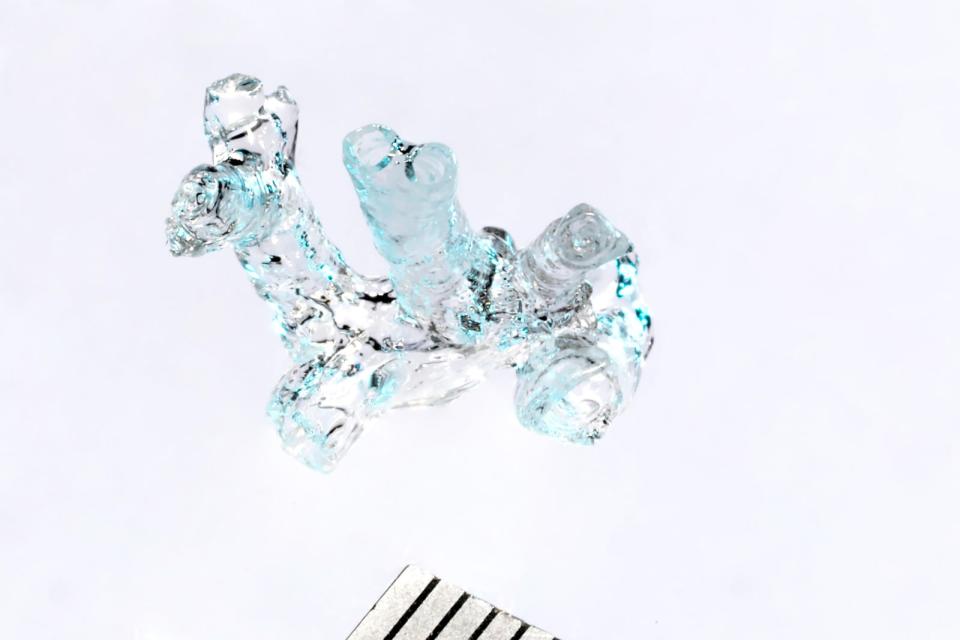Scientists bioprint living tissue in a matter of seconds
It could lead to a new generation of personalized artificial organs.
Bioprinting holds great potential for repairing injuries, testing drugs or replacing whole organs, but it's currently limited in complexity, viability and speed -- you can't just create tissue on a whim. Soon, though, it might be a matter of crafting whatever you need when you need it. Scientists at EPFL and University Medical Center Utrecht have developed an optical system that can bioprint complex, highly viable living tissue in "just a few seconds." It would represent a breakthrough compared to the clunky, layer-based processes of today.
The approach, volumetric bioprinting, forms tissue by projecting a laser down a spinning tube containing hydrogel full of stem cells. You can shape the resulting tissue simply by focusing the laser's energy on specific locations to solidify them, creating a useful 3D shape within seconds. After that, it's a matter of introducing endothelial cells to add vessels to the tissue.
The resulting tissues are currently just a few inches across. That's still enough to be "clinically useful," EPFL said, and has already been used to print heart-like valves, a complex femur part and a meniscus. It can create interlocking structures, too.
While this definitely isn't ready for real-world use, the applications are fairly self-evident. EPFL imagines a new wave of "personalized, functional" organs produced at "unprecedented speed." This could be helpful for implants and repairs, and might greatly reduce the temptation to use animal testing -- you'd just need to produce organs to simulate effects. This might be as much an ethics breakthrough as it is a technical one.

